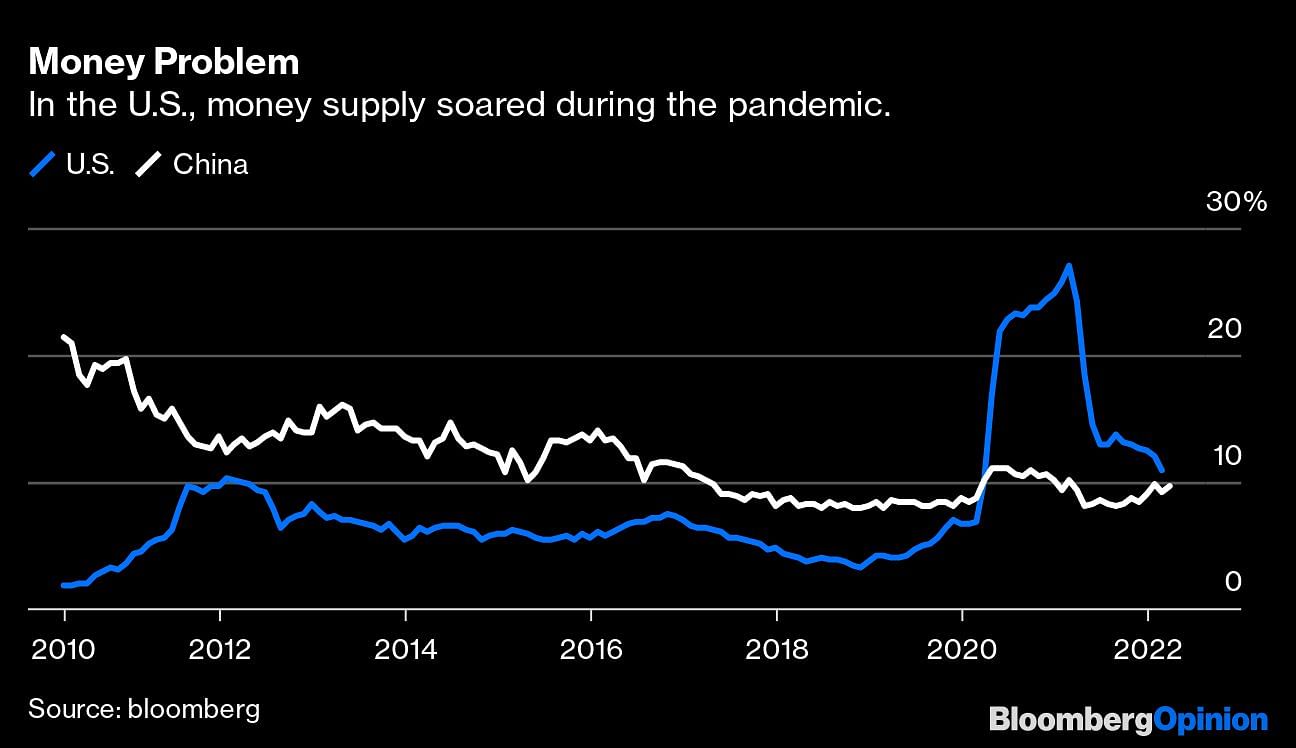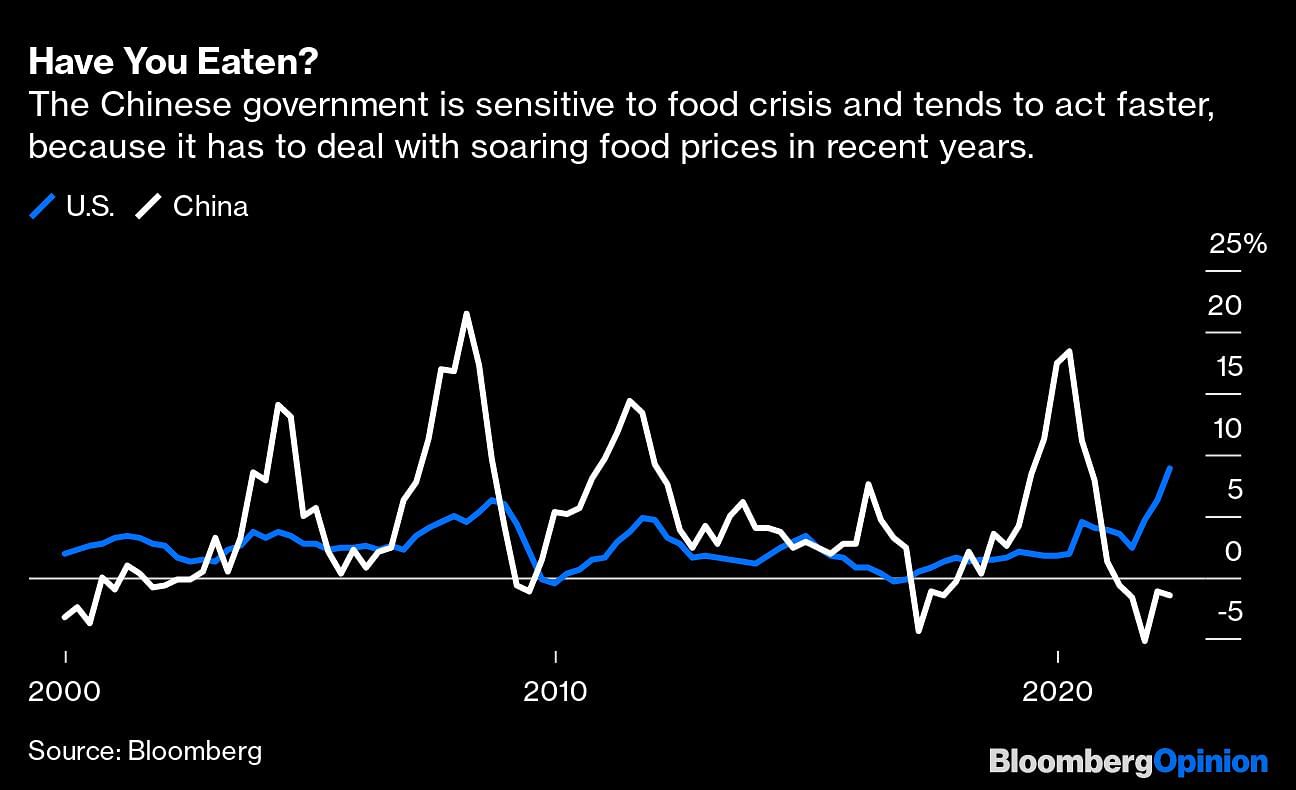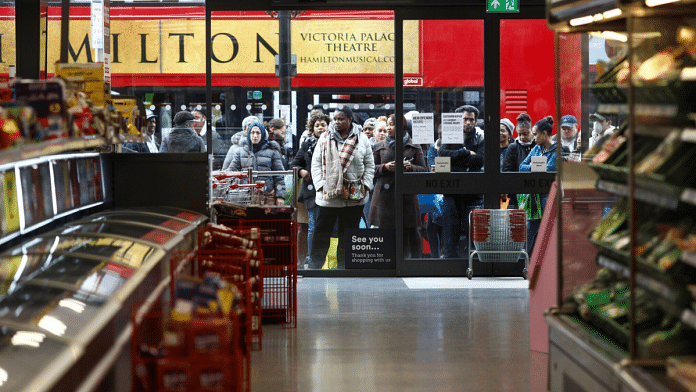Judging by the latest inflation numbers, developed nations are turning into emerging markets. The U.S. reported 8.5% year-on-year jump in March, while inflation in the U.K. soared to 7%, a 30-year high. Meanwhile, Chinese consumers saw only a 1.5% rise in prices last month.
This is not how it’s supposed to work. If anything, inflation should be more pronounced in emerging markets, where logistics are less streamlined and commodities traders have fewer hedging tools.
President Joe Biden has pointed his finger at supply-chain disruptions, the fallout from Russia’s invasion of Ukraine and China’s renewed Covid restrictions. And he’s not entirely off the mark. Shanghai, the world’s largest port, is effectively closed, amid a lockdown to stamp out omicron. Right now, the city is too busy conducting daily mass tests and building makeshift quarantine hospitals to supply the world with electronics and toys.
As such, there’s an argument for shortening supply chains and bringing manufacturing to one’s home turf. For decades, American consumers benefited from the cheap labor in China. But it’s coming back to bite, as workers there are now forced to stay at home.
But supply disruptions are just one factor. How about inflation as a monetary phenomenon? In the U.S., there’s just too much money floating around, thanks to the pandemic stimulus checks and the Federal Reserve’s easing programs. Money-supply growth reached 27% in February 2021, and despite all the talk of interest-rate hikes, the Fed was still funneling cash into the economy with purchases of government notes as recently as a month ago.
By comparison, the People’s Bank of China has been more restrained. It cut its policy rates shortly after the Wuhan outbreak early in 2020, but started curbing direct monetary infusions just a few months later. In fact, it spent much of 2021 trying to slash borrowing, so as to slow the overheating real estate market.

By all means, Russia’s invasion into Ukraine is not easy on China, the world’s biggest importer of oil and agricultural products. But unlike the West, which is trying to fight off high energy prices with handouts and subsidies, China is prioritizing self-sufficiency as a national security goal these days. President Xi Jinping always cast himself as a champion of green causes, but he recently made concessions on China’s carbon goals, calling for a “realistic” approach and encouraging coal production again. China can’t count on global markets for food security either, Xi said.
China is acting quickly in part because it recognizes that rising prices are a political problem and can easily lead to social discontent. In recent years, while headline inflation has been tame, food inflation was not. Fruit got so expensive in the summer of 2019 that the Chinese joked their financial aspiration was only to achieve “cherry freedom” — the luxury of being able to afford imported fruit. The cost of pork prices soared in 2020. Every time crop prices climbed, Beijing was quick to assure the public and call the increases temporary.

While not democratically elected, the Communist Party is sensitive to public opinion. Food, for instance, accounts of an estimated 20% of a typical consumer’s basket, whereas it’s about only 14% in the U.S. Milk, vegetables, meat and fruit are the day-to-day items consumers look at to judge how their government is doing.
Often, employers are not willing to match salaries to the rising cost of living. As such, soaring inflation directly erodes living standards — a concern even for politicians who don’t have to face voters. —Bloomberg
Also read: 48 hours after Dwarka lynching, accused ‘gau rakshaks’ on the loose, but 5 injured arrested






